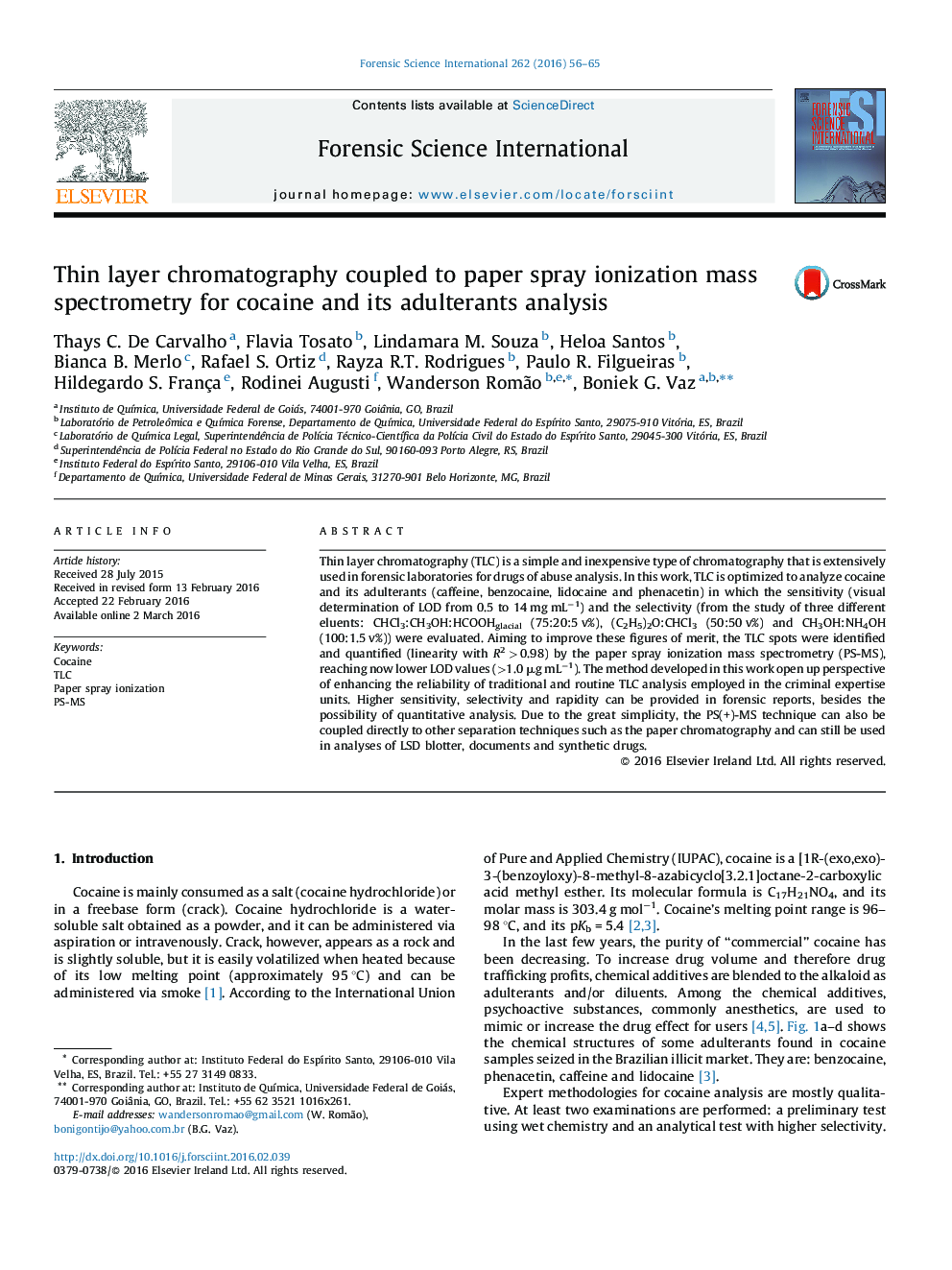| Article ID | Journal | Published Year | Pages | File Type |
|---|---|---|---|---|
| 95093 | Forensic Science International | 2016 | 10 Pages |
•TLC system was optimized for analysis of cocaine and its adulterants.•The sensitivity (LOD from 0.5 to 14 mg mL−1) and the selectivity were evaluated.•The TLC spots were quantified by the PS-MS (R2 > 0.98 and LOD > 1 μg mL−1).•The sensitivity and selectivity of TLC were improved from coupling with PS-MS.
Thin layer chromatography (TLC) is a simple and inexpensive type of chromatography that is extensively used in forensic laboratories for drugs of abuse analysis. In this work, TLC is optimized to analyze cocaine and its adulterants (caffeine, benzocaine, lidocaine and phenacetin) in which the sensitivity (visual determination of LOD from 0.5 to 14 mg mL−1) and the selectivity (from the study of three different eluents: CHCl3:CH3OH:HCOOHglacial (75:20:5 v%), (C2H5)2O:CHCl3 (50:50 v%) and CH3OH:NH4OH (100:1.5 v%)) were evaluated. Aiming to improve these figures of merit, the TLC spots were identified and quantified (linearity with R2 > 0.98) by the paper spray ionization mass spectrometry (PS-MS), reaching now lower LOD values (>1.0 μg mL−1). The method developed in this work open up perspective of enhancing the reliability of traditional and routine TLC analysis employed in the criminal expertise units. Higher sensitivity, selectivity and rapidity can be provided in forensic reports, besides the possibility of quantitative analysis. Due to the great simplicity, the PS(+)-MS technique can also be coupled directly to other separation techniques such as the paper chromatography and can still be used in analyses of LSD blotter, documents and synthetic drugs.
Graphical abstractFigure optionsDownload full-size imageDownload high-quality image (104 K)Download as PowerPoint slide
